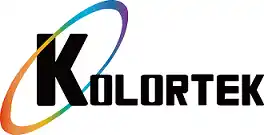Can Thermochromic Pigments be Combined with Other Pigments?
April 10th, 2023Thermochromic pigments are becoming increasingly popular within industries ranging from food to automotive manufacturing to textiles. They offer a wide range of benefits, from providing a fun visual experience and stunning color effects to indicating temperatures and safety conditions. On the other hand, standard pigments have been used for decades in a variety of industrial applications, including coatings, plastics, and printing inks. However, what happens when you combine these two types of pigments? Can thermochromic pigments be combined with other pigments? In this blog, we will explore the possibilities and limitations of combining thermochromic pigments with other pigments.
First, let us define what thermochromic pigments are. These pigments change color based on temperature changes, and they come in two main categories: reversible and irreversible. Reversible thermochromic pigments revert to their original color once the temperature returns to normal, while irreversible thermochromic pigments change color permanently. Both types can be found in various forms, such as powder, ink, or paint.
Standard pigments, on the other hand, offer a wide range of colors and shades, and they are widely used in many applications. They can be organic or inorganic, and their properties differ depending on the application. For example, inorganic pigments are more durable and fade-resistant, while organic pigments offer a broader range of colors.
So, can these two types of pigments be combined? The answer is yes, but it depends on the nature of the pigments, the application, and the desired effect.
Types of Thermochromic Pigments
As mentioned earlier, thermochromic pigments come in two general categories, reversible and irreversible. Additionally, they can be classified based on the temperature range to which they respond. For example, some thermochromic pigments change color at low temperatures, such as below room temperature, while others react to higher temperatures, such as above 100°C.
Reversible Thermochromic Pigments
Reversible thermochromic pigments can be further divided into two subcategories: liquid crystal and leuco dyes. Liquid crystal thermochromic pigments consist of crystal molecules that align in a specific direction when the temperature is low, forming a specific color. When the temperature increases, the molecules realign in a different direction, thus changing the color. On the other hand, leuco dyes are colorless at low temperatures but become colored when exposed to heat. Once they cool, they return to their original colorless state.
Irreversible Thermochromic Pigments
As the name suggests, irreversible thermochromic pigments change color permanently once they are exposed to heat. They are usually powder or ink-like, and they are used in applications where it is necessary to record temperature changes permanently. Furthermore, irreversible thermochromic pigments can withstand high temperatures, up to 1200°C in some cases.
Benefits of Combining Thermochromic and Standard Pigments
Combining thermochromic and standard pigments presents numerous benefits, depending on the application. Some possible advantages of combining these pigments include:
- Enhanced Visual Effects: Combining standard pigments with thermochromic pigments can result in stunning visual effects that can attract attention and create a unique experience.
- Temperature Indicating: When combined with standard pigments, thermochromic pigments can indicate temperature changes, alerting the user to potential issues such as overheating or cooling.
- Color Customization: By combining thermochromic and standard pigments, it is possible to customize the color effect, creating unique shades and combinations.
- Versatility: Combining these pigments can expand the range of applications that they can be used for, from food and beverage to automotive manufacturing and beyond.
Limitations of Combining Thermochromic and Standard Pigments
While combining thermochromic and standard pigments presents many benefits, there are also some limitations that need to be considered. Some possible downsides of combining these pigments include:
- Compatibility Issues: The pigments must be compatible with each other to achieve the desired effect. Some combinations may not be suited for certain applications or substrates, limiting their usability.
- Cost: Combining these pigments can increase production costs, and depending on the application, the price may be a factor in deciding whether to use them.
- Stability: Both types of pigments can be affected by light, temperature, and moisture, so care must be taken to ensure the stability and longevity of the combined pigment.
- Limited Color Range: Depending on the pigments’ nature, the color range may be limited, and it may not be possible to achieve the desired shade or effect.
Applications of Combined Pigments
The combination of thermochromic and standard pigments is well-suited for various industrial applications, including:
- Thermal Labels: These labels are used to indicate temperature changes, for example, in food packaging, medical devices, and electronics.
- Safety Indicators: When combined with a standard pigment, thermochromic pigments can indicate safe or hazardous conditions, such as in fire extinguishers, gas detectors, or emergency exit signs.
- Automotive Manufacturing: Combining pigments in car paints can result in unique visual effects, indicating temperature changes or creating a customized look.
- Textile Industry: Combining pigments in fabrics can create a range of visual effects, from color-changing t-shirts to mood rings.
- Printing Inks: Combining pigments in printing inks can create unique visual effects in packaging or promotional materials.
Combining thermochromic and standard pigments offers a wide range of creative possibilities for various industries, including automotive manufacturing, textiles, packaging, and more. While the combination presents many benefits, it is essential to consider the compatibility, stability, and cost factors to ensure that the desired effect is achieved. With careful planning and experimentation, the combination of these pigments can result in stunning visual effects and customized applications.
